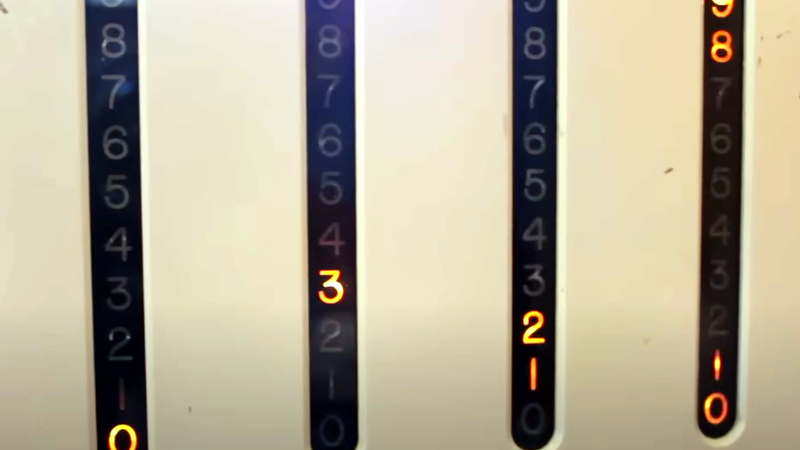We think of digital displays as something you see on relatively modern gear. But some old gear had things like nixies or numitrons to get cool-looking retro digital displays. The HP 521A frequency counter, though, uses four columns of ten discrete neon bulbs to make a decidedly low-tech but effective digital display. [Usagi Electric] has been restoring one of these for some time, but there was a gap between the second and third videos as his workshop became a kitten nursery. You can see the last video below.
In previous videos, he had most of the device working, but there were still some odd behavior. This video shows the final steps to success. One thing that was interesting is that since each of the four columns are identical, it was possible to compare readings from one decade to another.
However, in the end, it turned out that the neon bulbs were highly corroded, and replacing all the neon bulbs made things work better. However, the self-check that should read the 60 Hz line frequency was reading 72 Hz, so it needed a realignment. But that was relatively easy with a pot accessible from the back panel. If you want to see more details about the repair, be sure to check out the earlier videos.
We love this old gear and how clever designers did so much with what we consider so little. We hate to encourage your potential addiction, but we’ve given advice on how to acquire old gear before. If you want to see what was possible before WS2812 panels, you could build this neon bulb contraption.

















I remember seeing one of these at our university back in the 70’s. It was later sold as extraneous equipment. Great informative video. Glad you didn’t have a cat-tastrophe and your tech-cat-nical staff was there to help. 😁
Are you kitting us?
It leaves me feline confused…
A pretty interesting and somewhat beautiful device.
No doubt time consuming, but not out of the relms of a hobbyist building from discrete through hole components.
They were big, and couldn’t count very high. Especially the ones hobbyists could get through surplus.
More common were frequency meter projects. An analog meter fed by a pulse counting detector. Not very good, limited frequency coverage, but they were there. After ICs came along, they were extended by decade counters working as a prescaler.
My first thought was I’d seen digital counter projects done withe tubes or transistors, but since I can’t conjure up anything specific, it wasbprobably RTL ICs. So again low counting speeds.
It was TTL that provided the density and speed to make decent frequency counters. Heathkit offered one in 1971, but there were projects by then.
best way to make any hack more awesome is to include kittens.
And a 555. I mean … a cat named 555, lol!
There is always a one count ambiguity in the gate timing with such devices, and so to see an occasional reading that is off by one count is normal.
And their average impedance is?
about 2 meg per animal and they can significantly degrade the signal to noise ratio at feeding time
Lucky to keep hold of the bits you needs with cats about. They love to play with wires, components, small PCBs and cable ties!
What a Purrfect project! I see the deconstructionist doggedly purrsued this project and is feline pretty proud of themselves.
Next, they should restore something made fur use with a cat-hode ray tube but they would need to screen their assistants when completed.